Contents
Alternariosis of tomatoes is a common disease that affects plants mainly in the greenhouse. However, specimens planted in open ground are not immune from it. The disease greatly weakens the bushes themselves and provides a significant reduction in yield. Alternariosis of tomatoes develops quickly, therefore, even with proper treatment, “losses” are inevitable. Accordingly, it is necessary to reduce the risk of damage to tomatoes by a fungus – preventive measures will help in this.
Description and photo of Alternariosis
Alternariosis is a fungal disease that affects not only tomatoes and other plants from the Solanaceae family, but also fruit trees, berry bushes, legumes, cereals, sunflowers. The developing pathogen gradually deprives the plant of strength – without treatment, it loses its tone and withers due to “failures” in the process of photosynthesis and metabolism.
Alternariosis has been “assigned” several “alternative” names:
- macrosporiasis;
- dry spotting;
- zonal spotting;
- brown spotting.
At an early stage of development, Alternaria on tomatoes looks like grayish-brown, dry, rounded spots on the leaves. Initially, their diameter is small, but they quickly “blur”, the surrounding tissues turn yellow.
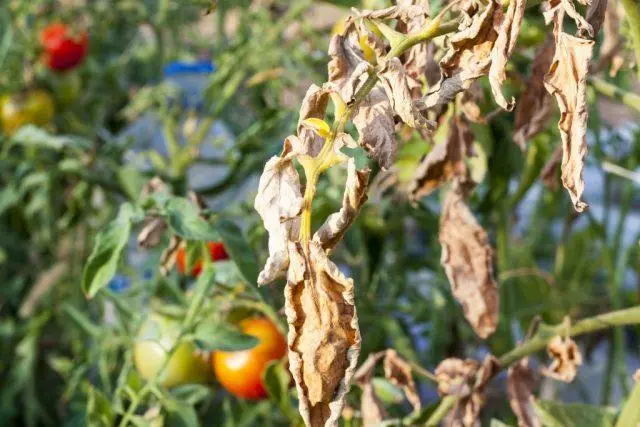
The pathogen spreads from bottom to top, starting from leaf blades closest to the ground
If the bushes are not provided with competent treatment, the fungus also affects the fruits. First, they are covered with separate “depressed” brown spots, then darken completely.
In adult bushes, at the same time as tomatoes, stems also suffer from Alternariosis. Without treatment, they become covered with longitudinal cracks, become brittle, and break easily.
Alternariosis on tomatoes can appear during the entire period of active vegetation – from the moment of growing seedlings to harvesting. In young seedlings at home, an additional symptom is observed – black “rings” at the base of the stems. In open ground, the pathogen is activated at a temperature of 7-10 °C.
Causes
Healthy plants most often “cling” the pathogen from the soil, from plant debris left in the garden from the previous season, or from weeds that are suitable for it as “intermediate” hosts. Sometimes tomatoes have to be treated for Alternaria and through the fault of the gardener. The pathogen is easily transferred from diseased bushes to healthy ones if disinfection of equipment is neglected.
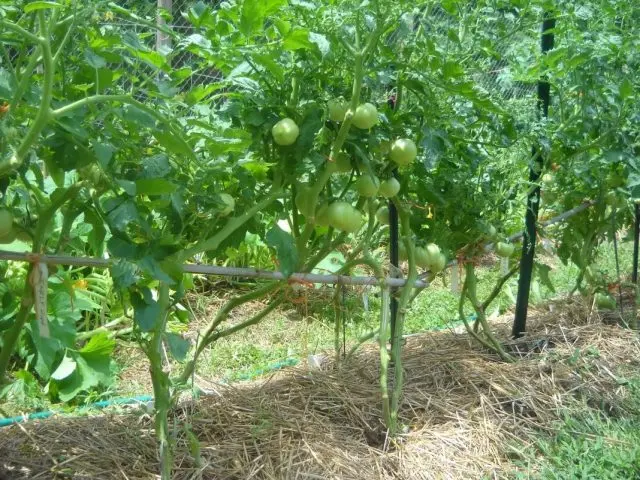
Tomato Alternariosis spores are dispersed by wind and raindrops.
The experience of gardeners shows that in the presence of “risk factors” treatment for Alternariosis is required for tomato bushes more often:
- alternation of sufficiently warm weather and heat with constantly high humidity;
- large differences between day and night temperatures, contributing to abundant dew;
- non-compliance with the rules of crop rotation;
- planting tomatoes next to other Solanaceae or plants that are also susceptible to Alternaria;
- regular “interruptions” with watering;
- the presence of sunburn, any mechanical damage;
- lower leaves touching the ground.
Danger of disease
Alternariosis of tomatoes means inevitable losses in the crop. Affected bushes develop slowly, very few buds appear on them, flowers and fruit ovaries fall off. Already existing tomatoes become smaller, deformed, their flesh is hard, almost tasteless.
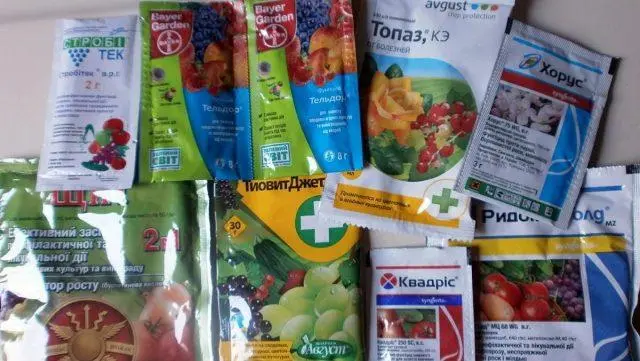
Without timely treatment, the final reduction in yield is on average 30-50%
Measures to combat tomato macrosporiosis
The use of folk remedies for the treatment of alternariosis of tomatoes is most often a waste of time. They, like agricultural practices, are used by gardeners in conjunction with other preventive measures. Agrochemicals or biological products with fungicidal properties will help get rid of the disease.
Agricultural practices
Agrotechnical measures are aimed at creating conditions that reduce the likelihood of infection of tomatoes with alternariosis to a minimum, so that they do not have to resort to their treatment:
- timely removal of the lower leaves, both infected and healthy;
- competent watering;
- regular ventilation of a greenhouse or greenhouse;
- choosing a place for landing in open ground so as to ensure normal air circulation.
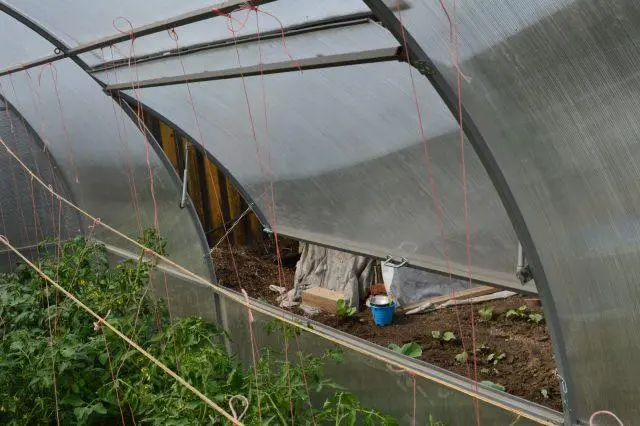
In tomatoes, you can gradually “bare” the stem by half – this will not hurt the bushes
Folk remedies
As “auxiliary” measures in the treatment of alternariosis of tomatoes, bushes with an interval of 15-20 days are recommended to be sprayed with compounds with antibacterial properties. For 10 liters of water take:
- kefir or whey (1 l) and iodine (20 drops);
- food or soda ash (30 g);
- sifted wood ash (0,5 kg);
- potassium permanganate (about 0,5 tsp, until bright pink).
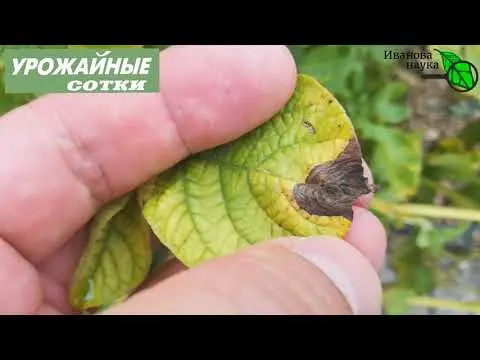
Potassium permanganate is suitable for disinfection of seeds, soil, treatment of adult plants
Chemicals
Agrochemicals with fungicidal properties are the only remedy suitable for the treatment of tomato from Alternaria in severe cases. However, they must be used in strict accordance with the instructions, otherwise, the tomatoes will become unsuitable for food.
Chemicals against Alternariosis of tomatoes are recommended to be applied before flowering and the formation of fruit ovaries, so that their active ingredients have time to “come out” of the plant tissues. If the bushes require treatment at a later date, only contact-type preparations are used.
Suitable fungicides include:
- Quadris SC;
- Acrobat MC;
- Ordan;
- Ridomil-Gold MC;
- I polish DF;
- Maksim;
- Abiga Peak.
Usually, at an early stage in the development of alternariosis, 1-2 treatments of tomatoes with fungicides are enough. In “severe cases” their number is increased up to 3-4 times.
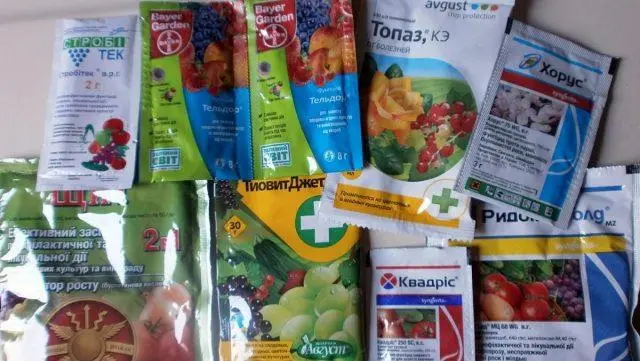
It is necessary to spray with a solution of an agrochemical both the plants themselves and the soil
Biopreparations
Preparations of biological origin help in the treatment of alternariosis of tomatoes due to the presence in the composition of strains of bacteria or fungi that are “hostile” to the pathogen, “feeding” on it. However, it should be taken into account that biological products begin to “work” more slowly than agrochemicals. In severe cases, they most likely will not give the desired effect, as they act softer.
Biological products for the treatment of tomatoes are used by spilling the soil and spraying the plants. Getting into the soil, they additionally activate the work of the “local” microflora. As a result, soil fertility increases, it becomes looser.
For the treatment of alternariosis of tomatoes, apply:
- Fitolavin;
- Alirin-B;
- Gamair;
- Trichodermin;
- Fitosporin-M;
- Phytocides.
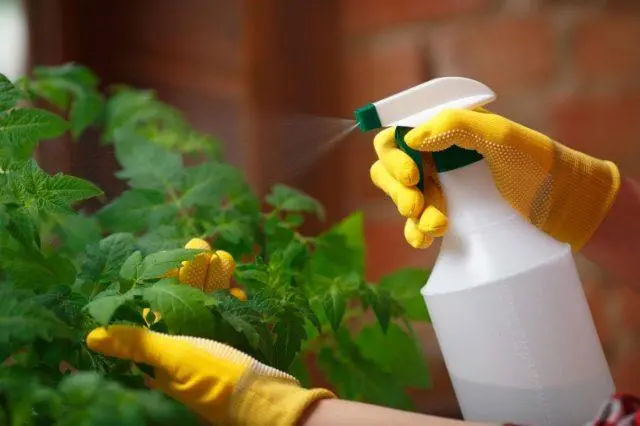
Biological products can be used at any stage of the active growing season
Features of the struggle in the greenhouse
Tomatoes in a greenhouse need treatment for alternariosis much more often than in open ground – a microclimate favorable for the fungus is created there. In a “confined space” spores spread much faster, which means more damage to plantings.
Accordingly, when growing tomatoes in a greenhouse, the room must be regularly ventilated, reducing the level of air humidity. With good aeration, the causative agent of Alternaria feels much worse than in a “stuffy” atmosphere.
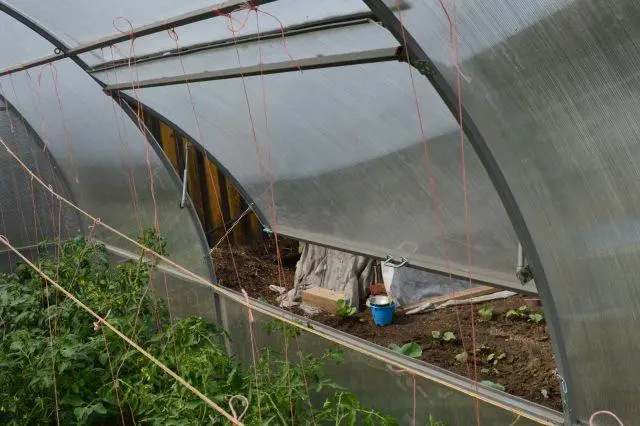
“Stale” air is preferred not only by the fungus that causes alternariosis, but also by many other pathogens, pests.
Along with this, “preventive” treatment of tomatoes is recommended to protect against the disease. To prevent the development of alternariosis, from the moment the seedlings are planted until flowering, the bushes are sprayed with any fungicides at least once a month. Then, before the formation of fruit ovaries, a “break” is taken, and after that, processing is continued using only biological preparations.
preventive measures
In order not to have to “at an accelerated pace” look for ways to treat tomatoes for alternariosis, it is strongly recommended to study preventive measures in advance and not neglect them. Knowing and applying the “basic” principles of gardening will also help.
Prevention includes:
- Placing beds with different crops from the Solanaceae family as far away from each other as possible. Alternariosis can “spread” from tomatoes to other plantings, and vice versa. The number of plants in need of treatment is increasing very rapidly.
- Compliance with the rules of crop rotation. The most unsuccessful predecessors for tomatoes are any Solanaceae. Especially if last season the crops in this garden needed treatment for Alternaria.
- Dressing seeds before planting in a solution of any fungicide. Or soaking in hydrogen peroxide diluted with water, potassium permanganate. Disinfection is especially important if the seeds are self-harvested.
- Planting seedlings according to the scheme recommended for this variety or hybrid. The reason is the same – to prevent the rapid spread of alternariosis between tomato bushes and gain time for treatment.
- Timely watering. Any method is suitable, with the exception of sprinkling.
- Timely ventilation of the greenhouse or greenhouse. In this case, it is necessary to exclude cold drafts that weaken the plants. With reduced immunity, treatment for alternariosis is required for tomatoes much more often.
- Regular spraying with “supporting” drugs – biostimulants, adaptogens, immunomodulators. They are carried out regardless of whether the tomatoes “survived” the treatment for alternariosis, whether there are characteristic symptoms on the bushes.
- Cleaning of plant debris and digging the soil at the end of each season. It is especially important to clean the garden bed if the crops on it in the current season were affected by Alternaria, they needed treatment. In a greenhouse, it is generally desirable to completely change the top layer of soil, or at least disinfect it.
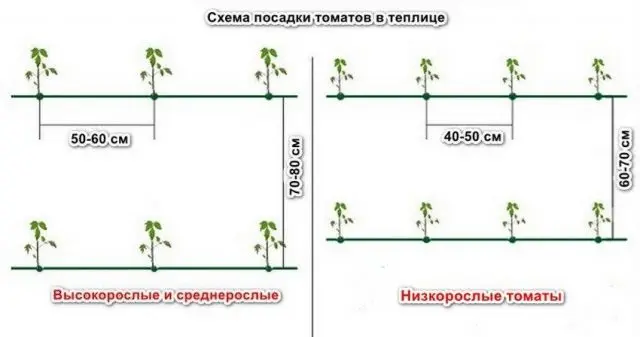
The planting pattern for each variety or hybrid is determined by the size of the plant
Resistant tomato varieties
Varieties and hybrids of tomatoes, which breeders are guaranteed absolute protection against Alternariosis, do not exist. However, the experience of gardeners shows that varieties that are resistant to cracking are less susceptible to infection:
- Golden Bullet;
- Aurora;
- De Barao;
- Firebird;
- Debut;
- Hope;
- Pickling miracle;
- Tanya;
- Diva;
- Linda;
- Beefsteak;
- Sanka;
- Ray.
Conclusion
Alternariosis of tomatoes is a disease that inevitably negatively affects the volume of the crop and the quality of the fruit. Bushes in the greenhouse are affected by the fungus much more often, therefore, when growing indoors, increased attention must be paid to prevention. The disease develops quite quickly, however, the use of modern agrochemicals and biological products can minimize the damage. Folk remedies for the treatment of alternariosis are ineffective, in most cases their use is a waste of time.









